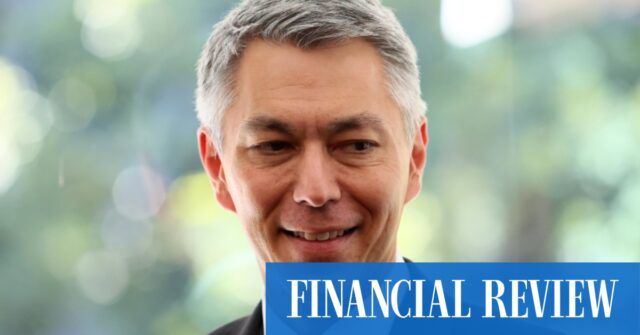Andrew Forrest’s Wyloo Metals and Panoramic Resources have also halted their nickel operations in WA this year due to the low prices.
The slump in critical mineral prices, however, is not expected to have a major impact on BHP’s dividend thanks to its bigger iron ore business.
Merlon Capital principal Andrew Fraser, who helps oversee the firm’s equity income fund, said he remained bullish on BHP and Fortescue Metals, noting that iron ore and its robust prices were the dividend’s main drivers.
Mr Fraser shrugged off concerns about the impact of the closure of BHP’s nickel division, saying the business was fairly minor when compared to the iron ore operations.
“The iron ore pricing environment is much more significant contributor to the cash flows, then some of the other commodities like nickel or copper.
“BHP and Fortescue have reasonably strong grounds to maintain their dividends, especially since the iron ore price has risen in the past six months.”
Plato Asset Management has a similar view. Managing director Dr Don Hanson, who oversees the Australian Shares Income Fund, said the robust iron ore price meant that the firm was still expecting a “reasonable dividend” from BHP.
His fund is, however, underweight the lithium producers amid the rapid decline in spodumene prices. And last week, Wood and Mackenzie said prices for Australian lithium had further to fall.
The latest research from Janus Henderson Investors revealed that Australia’s mining sector, whose dividends vary with the commodity cycle, had contributed heavily to the 0.9 per cent dip in global shareholder payouts in the third quarter to $US421.9 billion.
BHP, the world’s largest dividend payer in 2021 and 2022, cut its final 2023 dividend by more than half year-on-year. Reductions from Fortescue Metals and Rio Tinto also weighed on the global cuts to dividends over Q3.
Elsewhere, Plato and Merlon expect dividend payouts to remain steady thanks to the ASX’s deep concentration from the major banks and large miners. Both fund managers are broadly positive about the outlook for dividends.
First Sentier, meanwhile, remains cautious because moderating inflation would challenge the ability of companies to generate top-line sales growth and place downward pressure on future earnings and dividends.
In financials, Plato and Merlon said they preferred general insurers QBE and IAG over the banks as they continued to benefit from high-interest rates and the ability to pass on increased premiums.
“We think that looks quite attractive, and we expect them to continue to increase dividends,” Dr Hanson said.
As for the banking sector, Merlon’s Mr Fraser said he did not expect the major lenders to cut dividends “substantially” this reporting season notwithstanding the pressures on their interest margins and increased competition for mortgages.
“We haven’t seen a demonstrable uptick in bad debts,” he noted. “The banks are actually conducting on market buybacks” which was a vote of confidence for their quality of their loan book and the outlook for arrears.
Merlon prefers Westpac to rival Commonwealth Bank, because of its cheaper valuation even if the latter was the “clear industry leader”.
“Commonwealth Bank is reasonably stretched,” he said.
“We’ve got significant positions in both QBE and IAG. Both those stocks have been very good performers for us in the last several years, but we still think that there is further upside in both those names.
“It’ll start to come through in the interest dividend payments over the next six to 12 months.”
First Sentier’s Mr Minbatiwala said while it was unlikely the major banks would slash their dividends this year, he was still cautious because of the increased cost pressures the banks faced which could challenge earnings in 2024 and into 2025.




